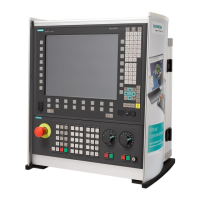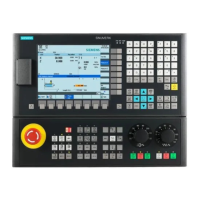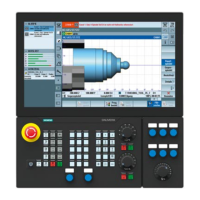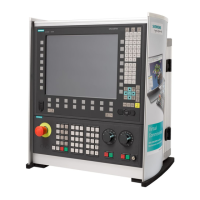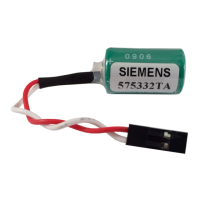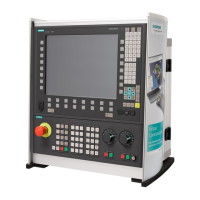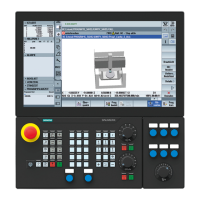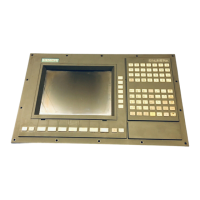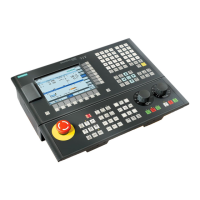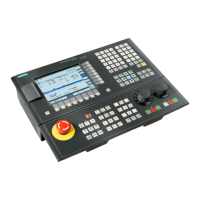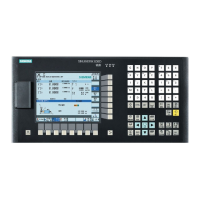Tool offsets
8.17 Special handling of tool offsets
Fundamentals
8-72 Programming Manual, 10.2004 Edition, 6FC5 298-7AB00-0BP1
SD42900
MIRROR_TOOL_LENGTH
Mirroring of tool length components and components of the
tool base dimension
D42910 MIRROR_TOOL_WEAR Mirroring of wear values of the tool length components
SD42920 WEAR_SIGN_CUTPOS Sign evaluation of the wear components depending on the
tool point direction
SD42930 WEAR_SIGN Inverts the sign of the wear dimensions
SD42935 WEAR_TRANSFORM Transformation of wear values
SD42940
TOOL_LENGTH_CONST
Assignment of tool length components to geometry axes
SD42950 TOOL_LENGTH_TYPE Assignment of tool length components irrespective of tool
type
SD42960 TOOL_TEMP_COMP Temperature compensation value in tool direction. Also
operative when tool orientation is programmed.
References:
/PGA/, Programming Guide Advanced, Chapter 8
/FB1/, Description of Functions, Basic Machine (Part 1), Tool Compensation (W1)
Description
Activation of modified setting data
When the setting data described above are modified, the tool components are not
reevaluated until the next time a tool edge is selected. If a tool is already active and the data
of this tool are to be reevaluated, the tool must be selected again.
The same applies in the event that the resulting tool length is modified due to a change in
the mirroring status of an axis. The tool must be selected again after the mirror command, in
order to activate the modified tool length components.
Orientatable toolholders and new setting data
Setting data SD 42900-42940 have no effect on the components of an active orientatable
toolholder. However, the calculation with an orientatable toolholder always allows for a tool
with its total resulting length (tool length + wear + tool base dimension). All modifications
initiated by the setting data are included in the calculation of the resulting total length; i.e.
vectors of the orientatable toolholder are independent of the machining plane.

